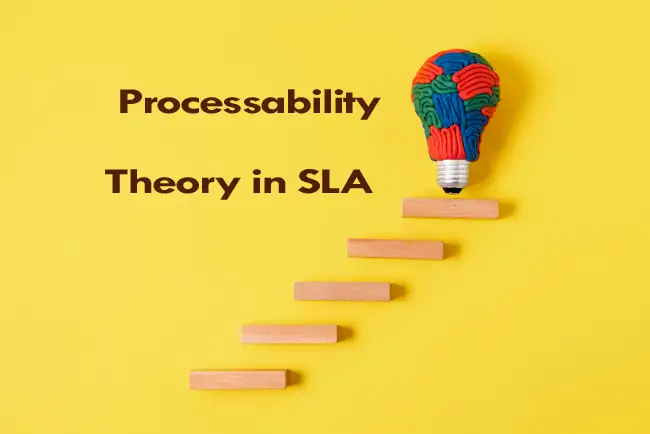Psycholinguistic models in second language learning written and narrated by Dr. Mohammad Hossein Hariri Asl
Author: Dr. Mohammad Hossein Hariri Asl
Video of psycholinguistic models in language learning
Abstract
In the late 1960s, after behaviorism and at the start of Transformational-Generative Grammar proposed by Chomsky, A great deal of emphasis was placed on thinking, comprehension, memory, and uniqueness of language learning. Language learning was regarded as an active mental process, rather than a habit formation process and grammar was back again to language learning through inductive reasoning. Language learning was no longer viewed as a ‘stimulus-response reinforcement’ matter. The present study was carried out to shed more light on cognitive approaches to learning second languages and their different models, e.g. information processing, noticing, input, monitor, interaction, speech production, etc. It is supposed that by expanding our knowledge in this particular field, the cognitive process of second language learning and teaching would be far facilitated.
What is psycholinguistics?

Since the introduction of Chomsky’s grammatical theories and the beginning of transformational-generative linguistics, several new interdisciplinary branches of linguistics have appeared. One of the most well-known is psycholinguistics, the field dealing with the relationships between language and the mind (Chastain, 1988). Elgin (1979, as cited in Chastain, 1988) lists the following nine questions that are typical of the areas of interest to psycholinguists:
- How do humans learn their native language?
- There are four activities involved in what is called ‘verbal processing’: speaking, understanding, reading, and writing. How does it work, in terms of cognition, perception, and physiology?
- How do human beings learn second languages? In what way does such learning resemble—or differ from—the learning of a first (native) language?
- What is verbal learning and how does it take place? This question necessarily involves the problem of memory.
- Is there any evidence for the psychological reality of the models of grammar proposed by T-G linguists?
- What can we know with certainty about the location of language functions in the brain? Is it possible to localize such functions or are they spread throughout the brain without distinction?
- When something goes wrong with human language ability, how can we explain the disorders and what can we do about them?
- Is the traditional assumption that language is uniquely restricted to humans a correct one? If not, where else in the animal kingdom should we look for language?
- How can the vast amount of new knowledge that helps to answer questions 1 to 8 be made known to specialists in related fields where it is needed?
Psycholinguistics is sometimes defined as the study of language and the mind. As the name suggests, it is a subject which links psychology and linguistics. The common aim of all who call themselves psycholinguists is to find out about the structures and processes which underlie a human’s ability to speak and understand language (Aitchison, 2008).
Psycholinguistic Models
Psycholinguistic models concern the way in which speech is planned and monitored by speakers (Ellis, 2008). Many psycholinguistic models draw conclusions about human processing by analogy with the operations of computers. The different components of a model and their interconnections are described as the model’s architecture (Field, 2004).
The stages of the process might take the form of a heuristic: a rule-of- thumb problem-solving procedure which can usually (but not always) be relied upon to achieve a desired outcome. Or they might be presented as an algorithm, a failsafe step-by-step problem-solving procedure which is certain to achieve the desired outcome but may be slower than a heuristic (Field, 2004). Today, some models (notably connectionist ones) also mirror the way in which the brain transmits information by electrical impulses across multiple neural connections.

In the field of SLA, according to Ellis (2008), two somewhat different cognitive paradigms can be identified. One of these draws on a ‘computational model of L2 acquisition, which characterizes acquisition in terms of input, the internal computation of data from the input, and output. This is the mainstream model informing SLA.
Whether natural language obeys strong or weak compositionality is an unresolved question about the syntax–semantics mapping. In what follows, we first sketch three rules of compositional interpretation that are taken to be basic, strongly compositional, and generally uncontroversial (Heim & Kratzer, 1998; Jackendoff, 2002, as cited in Gernsbacher & Traxler, 2006).
These rules specify the basic means of composing meanings from the products of lexical and syntactic analysis, and we believe they represent the types of operations that should be incorporated into psycholinguistic models of interpretation, either explicitly or functionally. We then review well-known phenomena that challenge strong compositionality and outline the main approaches to these phenomena in linguistic theory (Gernsbacher & Traxler, 2006).
Faerch and Kasper (1986) have offered some psycholinguistic models for SLA. The first model is based upon transformational-generative grammar (TG). This is technically referred to as ‘learning without comprehension’ or ‘TG-based model of language learning’ (Faerch & Kasper, 1986).
Many TG linguists seem to agree that the goal of current linguistics is to explain the logical problem of language acquisition: ‘how a child masters a rich and highly structured system on the basis of degenerate and deficient data’. The best-known TG-based approaches to solving this problem downgrade the importance of input, emphasizing the triggering effect that input may not be the main tool for the setting of linguistic parameters.

Combining TG linguistics with insights from computer science, Berwick and Weinberg (1984) model the acquisition of syntax as “the acquisition of a series of parsers of increasing abilities” (p. 200). There are three basic components to this theory, the initial parser, input data, and an acquisition procedure. The function of the parser is to establish a syntactic representation of input. Input data are specified as consisting of grammatical sentences, and the acquisition procedure is assumed to be prompted by a failure in applying the parser to input.
The structural properties of the parser together with the acquisition procedure (responsible for the sequencing of input) determine what is taken in (Faerch & Kasper, 1986). In this response, Spada and White (1991) propose the concept of ‘input enhancement’.
The second is Krashen’s Input Hypothesis (Comprehensible Input). Krashen (1994, as cited in Krashen, 1998) believes that there are numerous studies that confirm that we can develop extremely high levels of language and literacy competence without any language production at all. He argues the need to distinguish ‘acquired’ L2 knowledge (i.e. implicitly knowledge of the language) and ‘learnt’ L2 knowledge (i.e. explicitly knowledge about language).

He claims that the former is developed subconsciously through comprehending input while communicating, while the latter is developed consciously through deliberate study of the L2. Krashen (1985, as cited in Barkhuizen & Ellis, 2005) claims that learners will acquire an L2 when they have access to comprehensible input and when their ‘affective filer’ is low so that the comprehended input is made available to the internal acquisitional mechanisms for processing.
In contrast, Swain (1985) has argued convincingly that comprehensible output also plays a role in L2 acquisition. Long (1996) emphasized that the role of ‘negotiation’ is to facilitate the kinds of conscious ‘noticing’ that Schmidt (1990) has argued is required in order for learners to process input for ‘intake’. In this response, Long (1996) adds:
…it is proposed that environmental contributions to acquisition are mediated by selective attention and the learner’s developing L2 processing capacity, and that these resources are brought together more usefully, although not exclusively, during negotiation for meaning (p. 414).
The prevailing metaphor for explaining these processes has been that of the computer. According to Ellis (1997), the ‘black box’ houses some kind of apparatus that extracts information from the ‘input’, works on it, stores it, and subsequently sues it in ‘output’. However, the actual type of apparatus involved and the nature of the computation performed remain a matter of some disagreement.
In particular, two radically different types of apparatus have been proposed. One type involves the idea of ‘serial processing’. That is, information is processed in a series of sequential steps and results in the representation of what has been learnt as some kind of ‘rule’ or ‘strategy’ (Ellis, 1997). This is the dominant version of the computational model in SLA.

What distinguishes this work on acquisitional sequences is that it led to and was informed by a strong theory, known as the ‘multidimensional model’. This theory sought to account for both why learners acquire the grammar of a language in a definite order and also why some learners only develop very simple interlanguage grammars (Ellis, 1997).
The alternative type of apparatus involves the idea of parallel distributed processing (PDP). This credits the learner with the ability to perform a number of mental tasks at the same time, for example, the ability to attend to both form and meaning while processing input (Ellis, 1997). Models based on parallel distributed processing reject the whole notion of ‘rule’. Instead, they see mental structures as consisting of elaborate sets of weighted connections between separate items.
Task-based variation
As Ellis (2008) has stated, learners’ performance varies according to tasks. Larsen-Freeman (1976) used five different tasks: speaking, listening, reading, writing, and elicited imitation in her study of grammatical morphemes. She found different accuracy orders, in particular between those tasks involving speaking of some kind and the reading/writing tasks.
The effects of planning

The concept of planning has been widely used in models of both first and second language production (Ellis, 2008).
According to de Bot (1992), “many aspects of speaking are the same for monolingual and bilingual speakers” (p. 2). In this response, de Bot (1992) favors Levelt’s (1989) Model of Speech Production as one of the best psycholinguistic sources of variability in accordance with different stages of speech production. According to de Bot (1992), Levelt’s (1989) Production Model has the following stages:
- The knowledge component and the conceptualizer: Decisions are taken regarding which variety of language to use in accordance with situational factors, and also which specific communicative intentions are to be realized in the spoken message. That is, the knowledge component is not language specific.
- The formulator and the lexicon: The preverbal message provided by the conceptualizer is converted into a speech plan by selecting the appropriate words from the lexicon and by applying grammatical and phonological rules. Information about the words in a speaker’s language is stored in the mental lexicon.
- The articulator: The speech plan is converted into actual speech.
- The speech comprehension system: It provides the speaker with feedback concerning the presence of possible mistakes in the phonetic plan or in overt speech and which also enables the speaker to make adjustments in the ‘conceptualizer’.
The effects of planning on L2 production have been investigated within the framework of information processing models according to which learners’ limited processing capacity makes it difficult for them to attend to form and meaning at the same time and thus obliges them to make decisions about how to allocate their attentional resources by prioritizing one aspect of language over other (Ellis, 2008).

Skehan (1996) has distinguished three aspects of linguistic performance: (1) fluency concerning the learner’s capacity to produce language in real time without undue pausing or hesitation; (2) complexity concerning the elaboration or ambition of the language that is produced and reflecting learners’ preparedness to take risks; and (3) accuracy concerning the extent to which the language produced conforms to target language norms.
Skehan argues that there are two types of knowledge-lexicalised and rule-based-and that learners draw differentially on these two types of knowledge depending on the conditions of production.
In terms of planning time, Ochs (1979, as cited in Ellis, 2008) states that whereas L1 production is largely automatic, L2 production is often not. He distinguished planned and unplanned discourses. The former is discourse that lacks forethought and organizational preparation, while the latter is discourse that has been thought out and organized prior to its expression.
According to Ellis and Yuan (2003), research to date lends general support to the claim that planning in advance impacts positively on language production, especially where fluency and complexity are concerned. They (2003) raise the issue of online planning as involving a particular kind of speech production that incorporates both ‘careful’ production ( as opposed to rapid production) and monitoring.
The effects of planning time on L2 use have been extensively investigated in some studies, such as Foster and Skehan’s (1999) ‘pre-task planning’ or ‘planning-as-rehearsal’, according to which, the time made available could be allocated to a prediction of what language and content would be needed to complete a task and the attempt to mobilize such relevant resources.
Monitoring
Speakers may monitor their output (i.e. pay conscious attention to specific elements of the utterance in order to correct or improve them (Ellis, 2008). Morrison and Low (1983, as cited in Ellis, 2008), made use of a similar production model to that of Levelt to distinguish post-articulatory monitoring, which operates on overt speech, and pre-articulatory monitoring, which occurs prior to the implementation of the phonetic plan.

The acquisition and production of language are generally regarded as psychological processes; thus the psycholinguistic perspective can prove to be a fruitful direction in the study of L2 use and learning (Kormos, 1999). Adopting a psychological approach to the investigation of L2 self-repairs and monitoring has potential for illuminating four areas of second language acquisition (SLA) research.
First, it can advance our knowledge of the psycholinguistic processes of L2 speech production and provide a basis of comparison with L1 self-repair research (van Hest, 1996a; van Hest et al., 1997, as cited in Kormos, 1999). Second, the psycholinguistic analysis of self-repairs might promote the testing of different psycholinguistic models of L2 learning and the development of automaticity.
Third, this perspective can also contribute to the integration of speech monitoring with cognitive theories of consciousness, awareness, and noticing in L2. Finally, a unified psycholinguistic framework such as Levelt’s (1989, 1993, as cited in Kormos, 1999) model would enable researchers to integrate findings from discourse analysis, speech processing, and SLA theory.
L2 vocabulary acquisition

Experimental studies of qualitative changes in learners’ knowledge of individual words have adopted two different approaches, labeled the developmental approach and the dimensional approach (Read, 1993). Paribakht and Wesche’s (1999) ‘Vocabulary Knowledge Scale’ is a good example of a developmental scale. This processes five levels based on whether learners are able to recognize a word, give a definition, and produce the word appropriately and accurately:
- Stage 1: The word is not familiar at all.
- Stage 2: The word is familiar but the meaning is not known.
- Stage 3: A correct synonym or translation is given.
- Stage 4: The word is used with semantic appropriateness in a sentence.
- Stage 5: The word is used with semantic appropriateness and grammatical accuracy in a sentence.
However, Schmitt (1998) considers this issue from another angle. Schmitt’s (1998) dimension approach describes the level of mastery of the various component types of word knowledge. This approach has its roots in a seminal paper by Richards (1976, as cited in Schmitt, 1998) which set out a number of competencies necessary for mastery of a word.
According to Gass (1988), there are five levels in a learner’s conversion of ambient speech (input) to output: (1) apperceived input, (2) comprehended input, (3) intake, (4) integration, and (5) output.
Modularity
Modularity is the hypothesis that language is a separate faculty, supported by general cognition but not dependent upon it. It is especially associated with the nativist view that language is genetically transmitted. Arguments in favour of modularity include the fact that nearly every infant manages to achieve full linguistic competence, regardless of variations in intelligence and in ability to perform other cognitive functions (Field, 2004).
The second account is perhaps better characterized as sociocognitive rather than cognitive. It affords a sociocultural explanation of L2 use and acquisition by viewing acquisition as originating in use and involving subsequent process of internalization (Lantolf & Thorne, 2005, as cited in Lantolf, 2006).

Tomasello’s (2003) psycholinguistic model proposed that “children begin to acquire language when they do because the learning process depends crucially on the more fundamental skills of joint attention, intention-reading, and cultural learning—which emerge near the end of the first year of life” (p. 21). From this perspective, language is a special and complex type of “joint attentional skill” that people employ “to influence and manipulate one another’s attention” (Tomasello, 2003, p. 21).
The primary mechanism that operates in language acquisition is imitation; however, in the case of language, it must take on a different perspective from other forms of imitative action, e.g., facial movements and gestures. If children merely put themselves in the place of adults when imitating communicative intentions, they would end up directing the communicative symbols at themselves rather than others.
Children must “engage in role reversal imitation” when learning to use symbols with adults, e.g., first and second person pronouns! in the same way adults use symbols with the child” (p. 27). The linguistic symbol that results from role reversal imitation is then “understood intersubjectively from both sides of the interaction” (p. 27); that is, the learning process guarantees that children acquire socially shared symbols by coming to realize that interlocutors can both comprehend and produce the same or similar symbols.
Information processing
Another approach is to start from the information the language-processing system needs in order to function, that is, what types of information must be available for the system to be able to perceive and produce language (De Bot, 1996). Information processing theory aims at modeling and quantifying the information people use in various cognitive processes. Levelt (1989) assumes that lexical processing is just another form of information processing generally.

Garman’s (1990) “language processing components” map basically indicates ways of getting from a message to be linguistically communicated to the signal that represents it, and vice versa. Two routes are provided: one, via the lexicon, carries the information flow for that part of utterance meaning and form which is represented in terms of constituent words; while the other, via syntax, does so for the constituent relations between words in utterances. Each of these routes is organized hierarchically, with respect to the message level, and to the lower level of working memory, to which they may contribute, and from which they may derive information.
Attention

According to Gass and Selinker (2008), attention refers to the concentration of the mental powers upon an object. It has come to be one of the most important constructs in second language research. In this response, according to Schmidt (1990), the three crucial levels of consciousness are perception, noticing, and understanding.
Perception
Perceptions are not necessarily conscious, and subliminal perception is also possible.
Noticing
Noticing refers to private experience, although noticing or focal awareness can be operationally defined as availability for verbal report, subject to certain conditions (Schmidt, 1990). Schmidt (1990) proposed noticing hypothesis. Awareness (through attention) is necessary for noticing which in turn is essential for learning.
Underlying this hypothesis is the idea of noticing a gap. Schmidt and Frota (1986, as cited in Gass & Selinker, 2008) suggested that “a second language learner will begin to acquire the target like form if and only if it is present in comprehended input and ‘noticed’ in the normal sense of the words, that is consciously” (p. 311).
Understanding
Noticing is the basic sense in which we commonly say that we are aware of something, but does not exhaust the possibilities. Having noticed some aspect of the environment, we can analyze it and compare it to what we have noticed on other occasions. We can reflect on the objects of consciousness and attempt to comprehend their significance, and we can experience insight and understanding. All of this mental activity—what we commonly think of as thinking—goes on within consciousness. Problem solving belongs to this level of consciousness, as do metacognitions (awareness of awareness) of all types (Schmidt, 1990).
In sum, both consciousness and language can be defined from a primarily cognitive (intrapersonal) or social (interpersonal) perspective. In addition, language can be defined as essentially a monological or a dialogical system. In the former case, it is seen as having an autonomous structure which basically consists of the subsystems of core linguistics, i.e. phonology, morphology, syntax, and semantics. Linguistics programs and introductory courses tend to reflect this view, often adding as additional (but ancillary) topics sociolinguistics, discourse, language acquisition, among others (van Lier, 1998).
Conclusion
Psycholinguistic models of speech production such as Levelt’s enable us to recognize that whereas some variability is socially motivated, some is not. In part, variability reflects the tension between the amount of effort needed to access words from the lexicon, execute a grammatical encoding, and then assign a phonological coding, and the availability of planning time (Ellis, 2008).
Production involves a constant trade-off of the competing demands on memory and control mechanisms. The result will be systematic differences in language use in accordance with opportunities available for pre-task and online planning and monitoring.
Romaine (2003, as cited in Ellis, 2008) points out that “variation is usually conditioned by multiple causes” (p. 431). These causes are both sociolinguistic and psycholinguistic in origin. It follows that what is needed is an approach that accounts for “the psycholinguistic problem of variation” (Preston, 2002, p. 141, as cited in Ellis, 2008)—one that acknowledges that the distinction and selection of forms is socially motivated and also addresses the psycholinguistic mechanisms involved.
A learner’s implicit knowledge (competence) is not open to direct inspection. We cannot easily look into someone’s mind to see how knowledge of language is represented or what kind of knowledge is being utilized in the performance of a language task. To some extent, this is possible through magnetic resonance imaging or MRI (Chee, Tan, & Thiel, 1999, as cited in Barkhuizen & Ellis, 2005).

This technology enables us to identify those parts of the brain that are activated in performing a language task and, in the long term, may enable us to determine the parts of the brain responsible for different kinds of linguistic processing. However, we are a long way from being able to plot cortical organization with reference to language use in this way.
Thus, by and large, researchers are forced to infer competence from some kind of performance. How learners perform some kind of language task serves as the principal source of information about what they know about the language (Barkhuizen & Ellis, 2005).
References
- Aitchison, J. (2008). The articulate mammal: An introduction to psycholinguistics. Oxen: Routledge.
- Barkhuizen, G., & Ellis, R. (2005). Analyzing learner language. Oxford: Oxford University Press.
- Berwick, R. C., & Weinberg, A. S. (1984). The grammatical basis of linguistic performance: Language acquisition and use. Cambridge: MIT Press.
- Chastain, K. (1988). Developing second-language skills: Theory and practice. Orlando, Florida: Harcourt Brace Jovanovich, Inc.
- De Bot, K. (1992). A bilingual production model: Levelt’s ‘speaking’ model adapted. Applied Linguistics, 13(1).
- De Bot, K. (1996). The psycholinguistics of the output hypothesis. Language Learning, 46(3).
- Ellis, R. (1997). Second language acquisition. Oxford: Oxford University Press.
- Ellis, R. (2008). The study of second language acquisition. Oxford: Oxford University Press. 0
- Ellis, R., & Yuan, F. (2003). The effects of pre-task planning and on-line planning on fluency, complexity and accuracy in L2 monologic oral production. Applied Linguistics, 24, 1–27.
- Faerch, C., & Kasper, G. (1986). The role of comprehension in second language learning. Applied Linguistics, 7(3).
- Field, J. (2004). Psycholinguistics: The key concepts. London: Routledge.
- Foster, P., & Skehan, P. (1999). The influence of task structure and processing conditions on narrative retellings. Language Learning, 49(1).
- Garman, M. (1990). Psycholinguistics. Cambridge: Cambridge University Press.
- Gass, S. M. (1988). Integrating research areas: A framework for second language studies. Applied Linguistics, 9(2).
- Gass, S. M., & Selinker, L. (2008). Second language acquisition: An introductory course. New York: Routledge, Taylor and Francis Group.
- Gernsbacher, M. A., & Traxler, M. J. (2006). Handbook of psycholinguistics. London: Elsevier Inc.
- Kormos, J. (1999). Monitoring and self-repair in L2. Language Learning, 49(2).
- Krashen, S. D. (1998). Comprehensible output. System, 26, 175-182.
- Lantolf, J. P. (2006). Sociocultural theory and L2: State of the art. SSLA, 28, 67–109.
- Lantolf, J. P., & Thorne, S. L. (2005). Sociocultural theory and the genesis of second language development. Oxford: Oxford University Press.
- Larsen-Freeman, D. (1976). An explanation for the morpheme acquisition order of second language learners. Language Learning, 26, 125-134.
- Levelt, W. J. M. (1989). Speaking: From intention to articulate. Cambridge: MIT Press.
- Paribakht, T. S., & Wesche, M. (1999). Reading and “incidental” L2 vocabulary acquisition: An introspective study of lexical inferencing. SSLA, 21, 195–224.
- Read, J. (1993). The development of a new measure of L2 vocabulary knowledge. The Netherlands: Edward Arnold.
- Schmidt, R. W. (1990). The role of consciousness in second language learning. Applied Linguistics, 11(2).
- Schmitt, N. (1998). Tracking the incremental acquisition of second language vocabulary: A longitudinal study. Language Learning, 48(2).
- Skehan, P. (1996). A framework for the implementation of task-based instruction. Applied Linguistics, 17(1).
- Spada, N., & White, L. (1991). Input enhancement and L2 question formation. Applied Linguistics, 12(4).
- Swain, M. (1985) Communicative competence: Some roles of comprehensible input and comprehensible output in its development. In Barkhuizen, G. & Ellis, R. (Eds.), Analyzing learner language, pp. 167 – 8. Oxford: Oxford University Press.
- Tomasello, M. (2003). Constructing language: A usage-based theory of language acquisition. Cambridge, MA: Harvard University Press.
- van Lier, L. (1998). The relationship between consciousness, interaction and language learning. Language Awareness, 7( 2&3).
How to cite this article in APA Style?
Hariri Asl, M. H. (2023). Psycholinguistic models in second language learning. LELB Society, https://lelb.net/psycholinguistic-models-in-second-language-learning/




We respond to all comments immediately. View the 30 newest comments and new topics in forums.